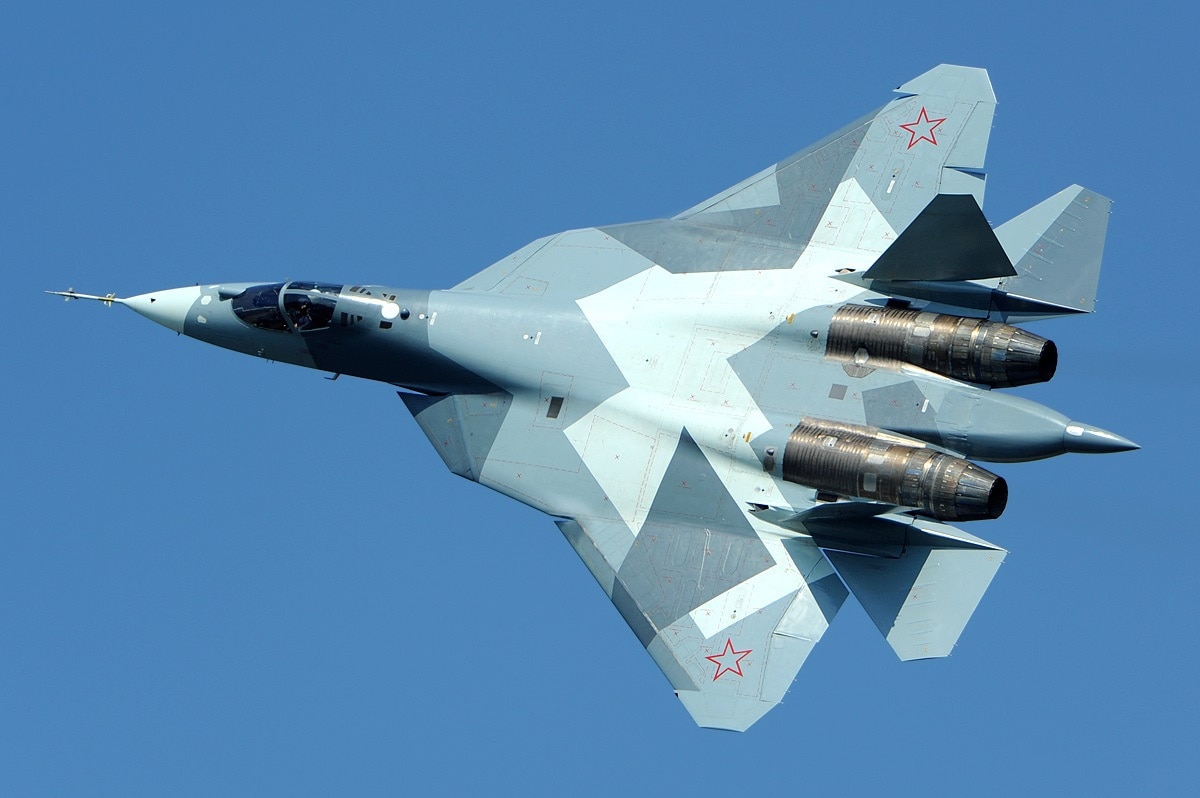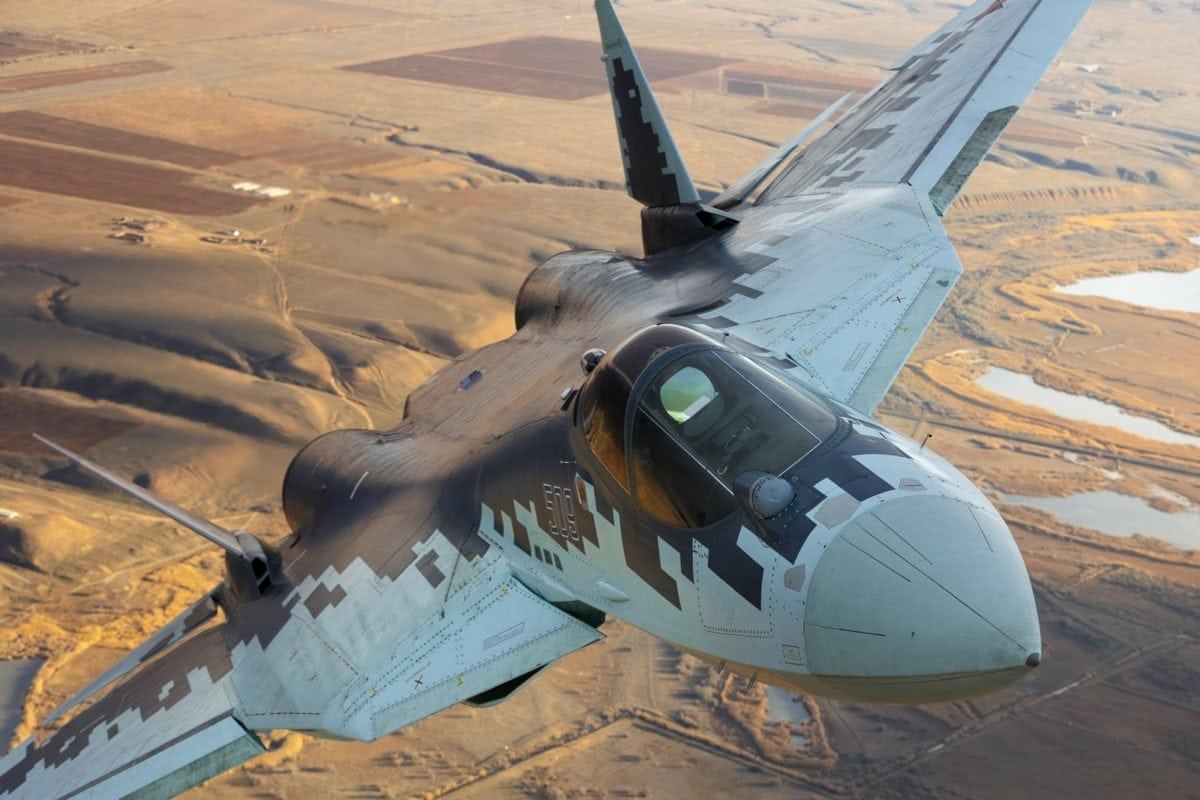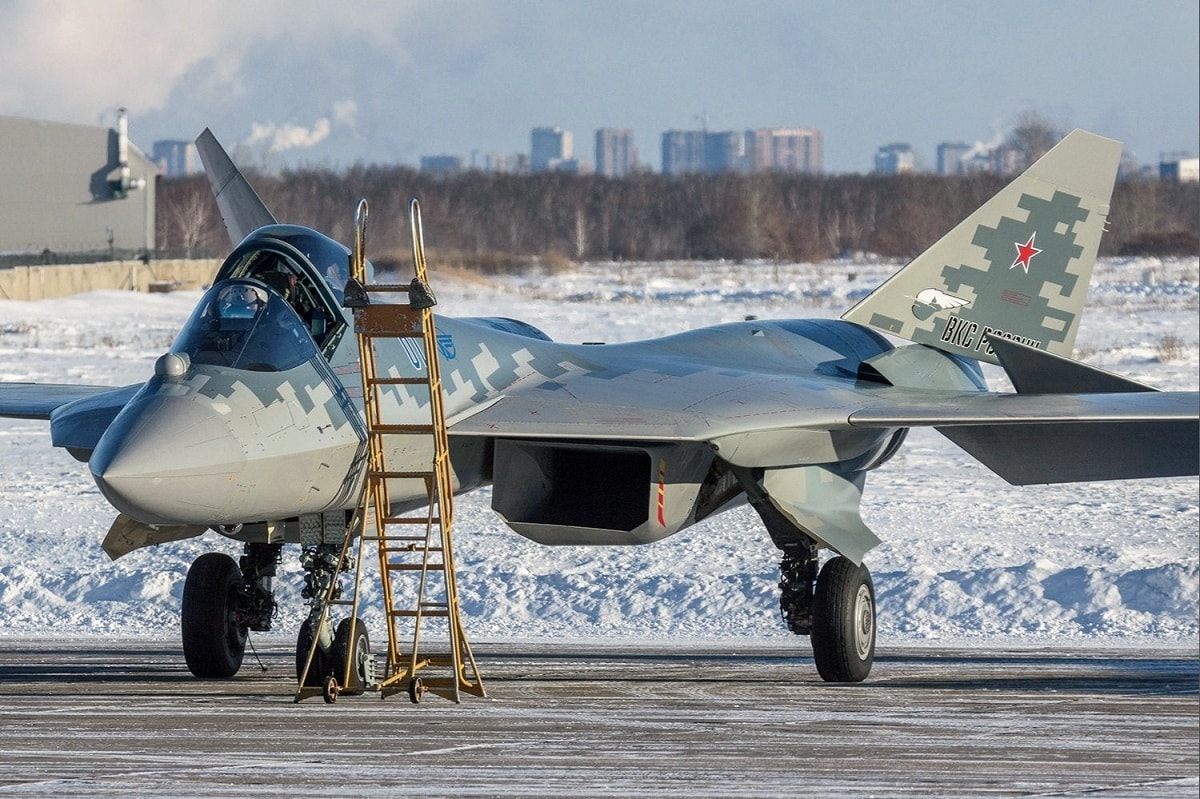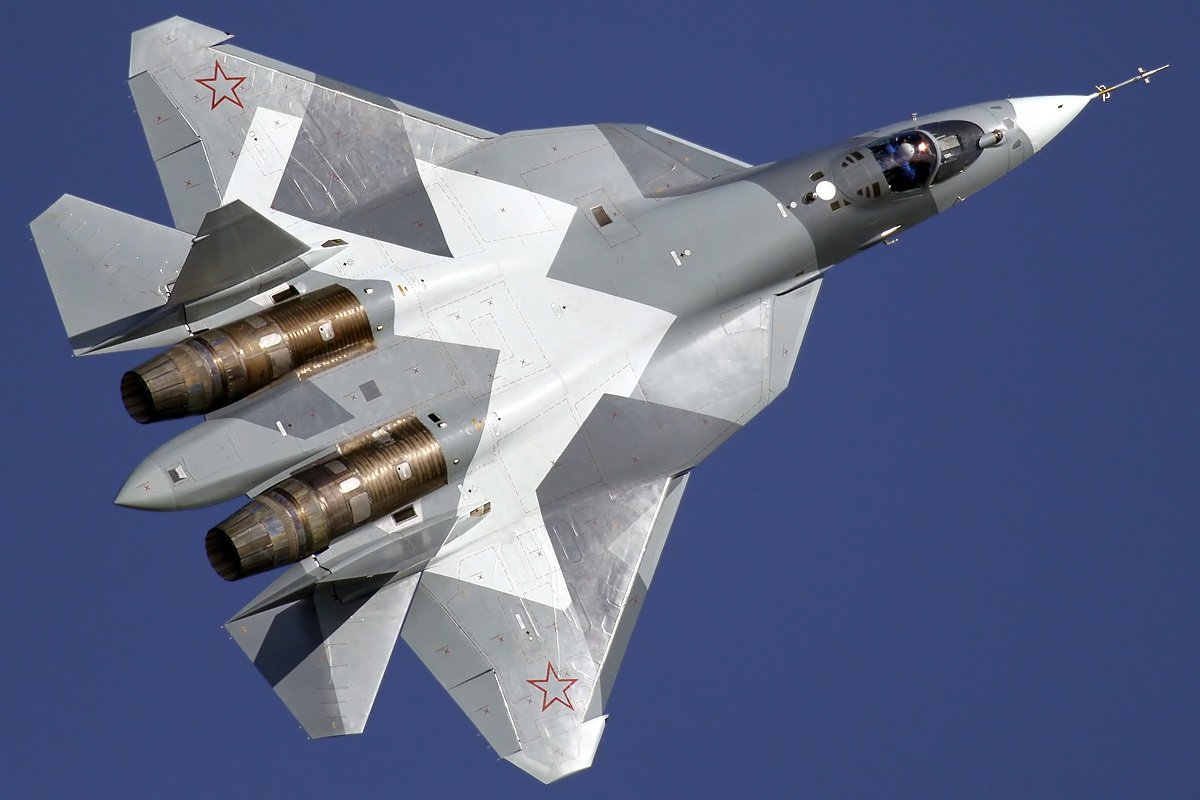Despite the fact that the Russian military has taken delivery of just a dozen Sukhoi Su-57 (NATO reporting name: Felon) to date, that fact hasn’t dissuaded Moscow from pushing forward with its bold ambitions for the twin-engine, stealth, multirole fighter. On Monday, it was reported that the production of the upgraded version of the fifth-generation combat aircraft would move forward as part of a Megapolis research and development (R&D) project.
It is expected to begin by the middle of the decade.
“In the upgraded version of the fighter as part of the Megapolis research and development project, a completely upgraded cockpit with the most advanced avionics will be installed,” a source in Russia’s military-industrial sector told Tass. “In addition, the aircraft will be equipped with a second stage power unit. It is planned that mass production of the upgraded Su-57 will start from 2025.”
The source further clarified that this variant being developed by Megapolis would be a single-seat version – and not the previously reported two-seat modification that is also being developed to control a swarm of heavy Okhotnik combat drones.
Multiple Su-57s in the Works
It was just last month that the Russian Sukhoi Design Bureau announced that it would test with the two-seat version of the Su-57 with four S-70 “Okhotnik” heavy strike drones. The modified aircraft will be used to control a swarm of drones, which will serve as a type of loyal wingman for the fighter plane. To successfully control the drones, a two-seat “command variant” of the Su-57 is being created.
The drones will reportedly deal with a full range of tasks that will include striking aerial and ground targets, while they will have the capability to provide network-centric interaction with the aircraft. The Oknotnik can fly up to 1,000 kilometers per hour and features stealth technology, which includes materials that reduce its radar signature while it features a flying wing/tail-less design. The drone is also outfitted with equipment for electro-optical, radar, and other types of reconnaissance.
Big Plans, But Slow to Arrive
The Russian military has continued to move forward with its ambitious plans for the Su-57, even as delivery of the aircraft hasn’t exactly been what could be remotely described as speedy. As it currently stands, the Russian Aerospace Forces are set to receive two dozen of the fighters by the end of 2024, while a total of seventy-six are expected to enter service by 2028.
The Su-57, which is essentially an evolution of the Su-27 (NATO reporting name: Flanker), has been touted as Russia’s most advanced aircraft. It features stealth technology that includes a broad use of composite materials and radar-absorbing coatings, while it is also capable of obtaining supersonic cruising speed. It is equipped with the most advanced on board radio-electronic equipment, which includes a powerful onboard computer that is described as an “electronic second pilot.” Its radar system is spread across the body, while its advanced avionics can help it overcome attacks from prior generation fighters as well as ground and naval defenses.

Russia’s Su-57 Stealth Fighter. Image: Creative Commons.

Image: Creative Commons.

Much like the Lockheed Martin F-35 Lightning II, the Su-57 can carry armament within its fuselage to help maintain a low radar signature. It has two large internal weapons bays arranged in tandem, and those run nearly the entire usable length of the aircraft’s fuselage. Each of those bays can carry up to four K-77M beyond visual range radar-guided missiles. Compared to earlier versions of the K-77 (NATO nickname: AA-12 Archer) the K-77M missile has a larger body and active electronically-scanned array radar seeker, allowing it to engage highly agile targets at ranges of up to 100 miles. The aircraft also stores a pair of K-74M2 short-range infrared-guided missiles in underwing fairings.
While Russia seems determined to upgrade the Su-57, the question remains when – and even if – the initial batch of the aircraft is finally ready to take to the skies.
Peter Suciu is a Michigan-based writer who has contributed to more than four dozen magazines, newspapers and websites. He regularly writes about military small arms, and is the author of several books on military headgear including A Gallery of Military Headdress, which is available on Amazon.com.

